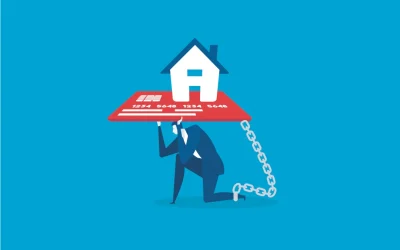Credit card processors all know the drill. A current merchant calls into the office and requests copies of their last 3 months of statements and also asks if they have a termination fee—Obviously their merchant is price shopping against their current payment provider. For the processor it is stressful (as they may lose a customer) as well as emotionally taxing – “I’ve done everything for that customer! How could they think of leaving me?” are the typical initial reactions.
In order to head off the dreaded “rate review,” some processors make the unethical and unwise decision to suppress not only monthly statements but also mailings and emails to the merchant. This is done to limit the account information that the merchant is rightly entitled. Why do they do this and what are the implications to a merchant?
Hiding Fees
Some payment processors sell a customer their services with the promise of an unrealistic rate and savings. After the merchant is enticed into the offer, they need to see a subsequent statement to determine if they actually received the promised savings. A statement with the new rates allows them to reach that conclusion. Without a monthly statement they don’t have the information needed to achieve a proper determination.
Additionally, some payment processing contracts allow for the increase in rates or fees with what’s know as a “Statement Message”. Notification of a rate or fee increase has to be announced to a merchant 30 days in advance of any increase. Without a monthly statement, an increase can occur without knowledge of the merchant. Over time this “rate creep” can be substantial!
Monthly statements may also have fees that detect a problem with the account itself. An “Invalid EIN” fee indicates that the account was established with an incorrect tax identification number. It is imperative that the correct tax information is associated with the account. An incorrect number which is not corrected may lead to as much as a 28% withholding tax from the IRS!
PCI Compliance
PCI compliance is more than a “good idea” – it is mandated by the card brands that each and every merchant, regardless of size has to complete their annual PCI SAQ (self-assessment questionnaire) and follow the prescribed protocols of the PCI Security Standards Council. Merchants who are PCI compliant also qualify for up to $100,000 in breach insurance with the card brands at no additional cost.
Typically there is a monthly or annual (or both) fee to maintain PCI compliance. If a merchant has not passed their annual PCI SAQ a fine is levied each and every month PCI compliance is not achieved. These fees can range from $19.95 to as much as $49.99 per month! Although the fine is irksome, the penalties that the card brands may levy can be astronomical in the event of a breach.
If a merchant has a breach of their payment system occur the various card brands (VISA, MasterCard, Discover, American Express) begin an inquiry into a merchant’s account—They are ultimately financially responsible for the losses after all. Should the card brands determine that a merchant is NOT PCI compliant they may levy fines as high as $100,000 for EACH card brand. If that is not troubling enough, the card brands may make the determination that a merchant should not have the ability to accept payments entirely!
Bottom line — Being PCI compliant makes sense and cents!
Interchange
So that sales person from the credit card processor offered to price your account at only 5 basis points over interchange—Really? Some unscrupulous processors promise an unrealistically low discount rate because they mark-up the “back-end” of interchange. For instance, a VISA REWARDS 1 credit card has an interchange rate of 1.65% + 0.10. Would you really know if the processor marked it up to 1.95% + 0.10? That 30 basis point mark-up added to the 5 basis points that was sold is actually a true discount rate
of 35 basis points! If your original discount rate with your current processor was 25 basis points, you’ve just increased your rate by 10 basis points.
Knowledge is power. The more information you have to run your organization the more control you have over maintaining costs and profitability. Would you tolerate not receiving statements from your bank, cable/cellphone provider or any other vendor? Of course you wouldn’t. Don’t accept anything less from your credit card processor!




0 Comments